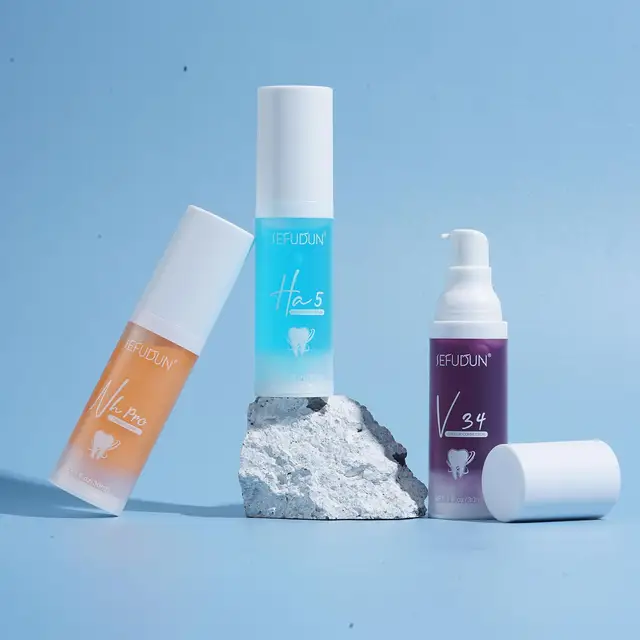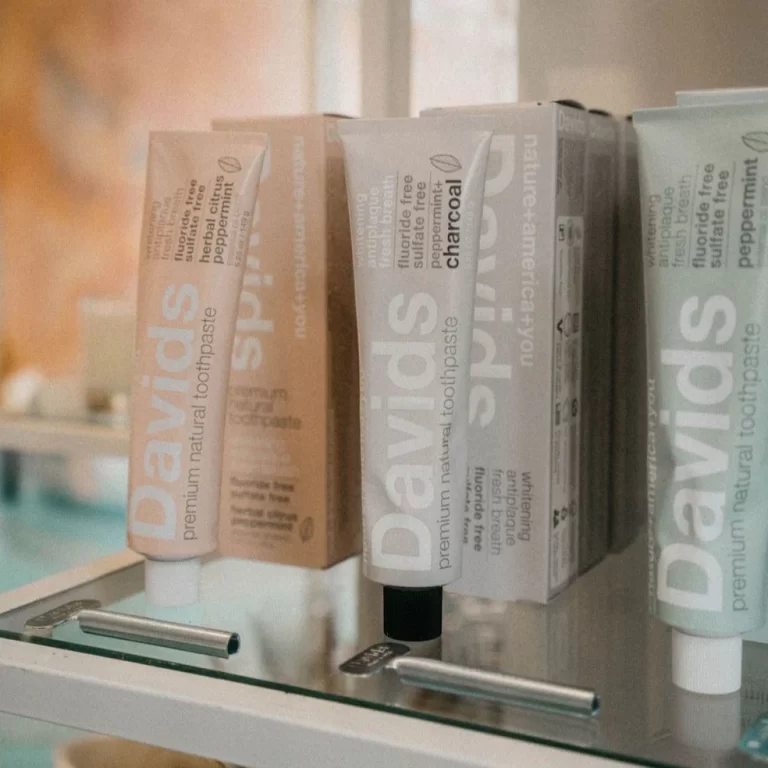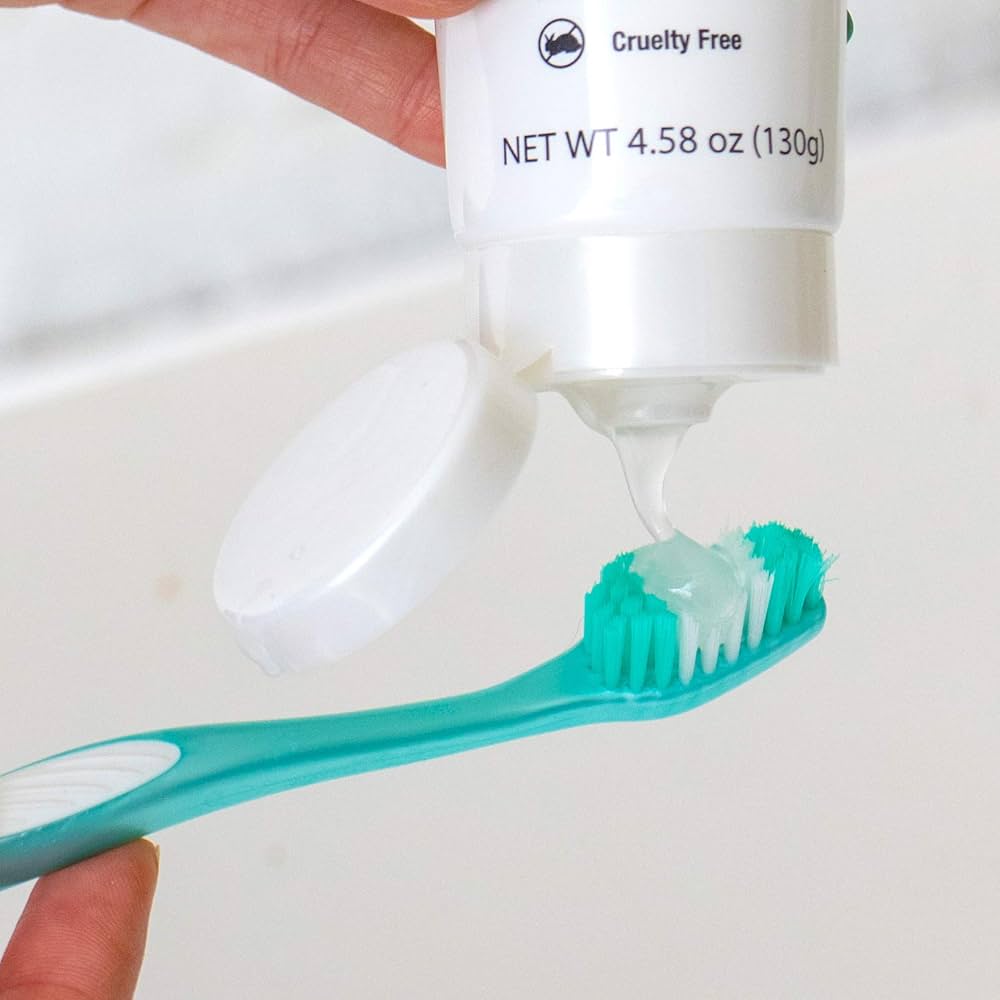
Titanium Dioxide in Toothpaste: Safe or Risky?
What is Titanium Dioxide?
Titanium dioxide is a natural mineral, widely used as a white pigment. It’s found in various consumer products, from food to cosmetics. In toothpaste, it serves multiple purposes. Titanium dioxide makes toothpaste look whiter. It can also provide other benefits, like reducing sensitivity. Despite these uses, safety concerns have arisen. Recent research suggests potential health risks, sparking debate and regulatory reviews. The European Union has already banned it in food products due to these concerns.
The Use of Titanium Dioxide in Consumer Products
Found in Food Products
Titanium dioxide is often added to food items. Its main role is to enhance their appearance. This makes them look whiter and more appealing. For example, it can be found in dairy products like milk and cheese. It’s also in sweets such as chewing gum and white chocolate. In the food industry, it’s known as E171.
Common in Cosmetic and Skincare Items
Moving beyond the pantry, titanium dioxide is prevalent in beauty products. It’s a critical ingredient in sunscreens, providing UV protection. The substance is also in makeup, face creams, and other skincare essentials. Here, titanium dioxide helps in creating an opaque and bright finish. In cosmetics, it may be listed as CI 77891.
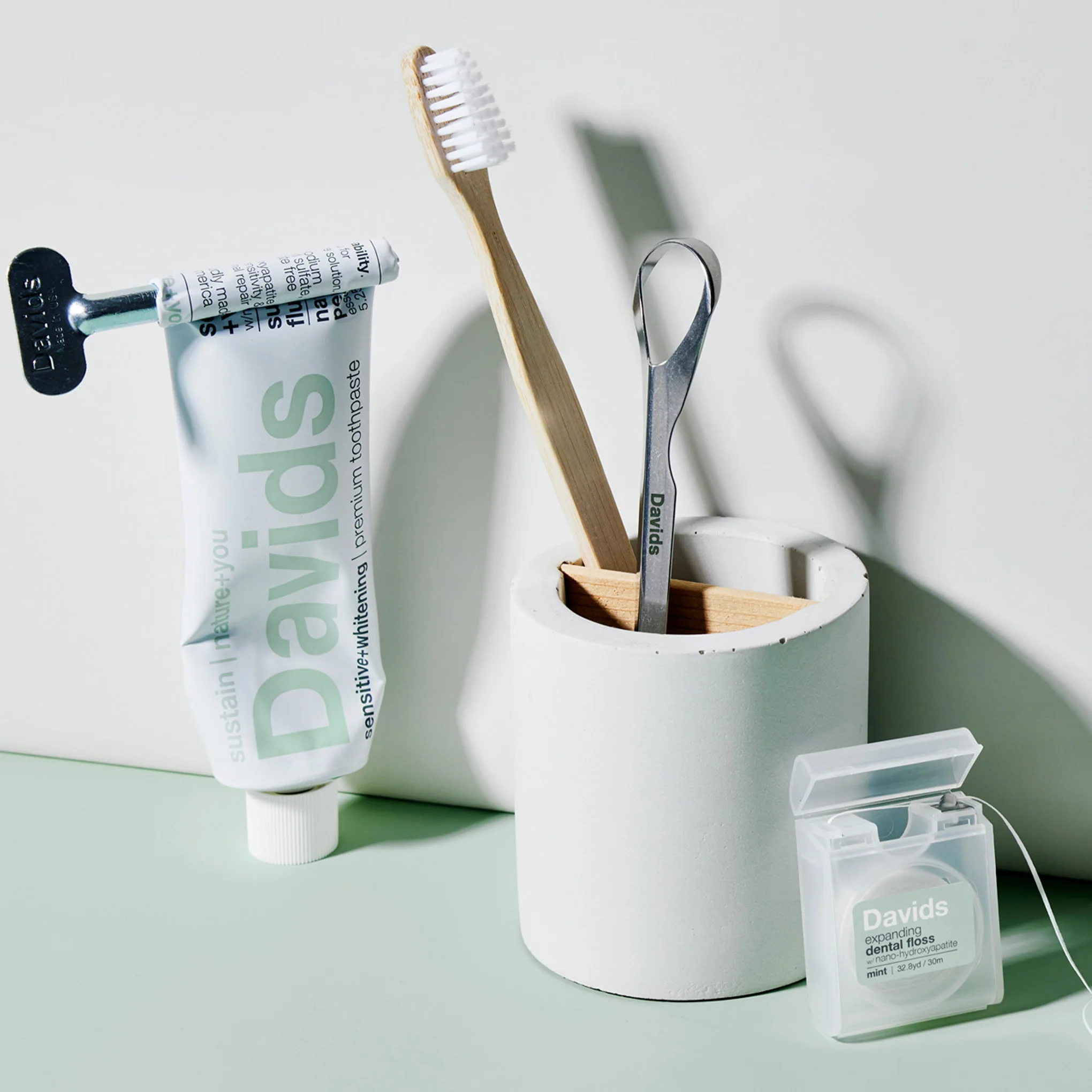
Titanium Dioxide in Toothpaste
Purpose of Titanium Dioxide in Dental Hygiene Products
In toothpastes, titanium dioxide serves two main purposes. Primarily, it gives a clean, white look to the product. This visual appeal links white to cleanliness in consumers’ minds. Additionally, titanium dioxide can act as an opacifier. This reduces product transparency, adding a premium feel. There are also claims it helps with sensitivity and erosion resistance.
How to Identify Titanium Dioxide in Toothpaste Ingredients
To spot titanium dioxide in toothpaste, check the ingredients. Look for ‘titanium dioxide’ or its cosmetic name, CI 77891. This can usually be found on the packaging or product description. If in doubt, contacting the manufacturer is a reliable way to confirm its presence or absence.
The Debate Over Titanium Dioxide Safety
Historical Safety Assessments and the EFSA?s Findings
Titanium dioxide has been subject to various safety assessments over the years. Earlier studies sanctioned its widespread use in consumer products, including toothpaste. However, the European Food Safety Authority (EFSA) revisited this topic with new research in 2021. Their findings pointed out that we cannot conclusively deem titanium dioxide as safe, particularly raising flags over its genotoxic potential – how it could harm cellular DNA.
Potential Health Concerns Linked to Titanium Dioxide
Health concerns associated with titanium dioxide stem from its potential to cause cell damage. Some studies suggest that nanoparticles of titanium dioxide could accumulate in the human body over time, potentially causing harm. The main fear is that this could lead to long-term health effects, including the risk of cancer. While evidence is not definitive, these concerns have fueled much of the current debate and regulatory scrutiny.
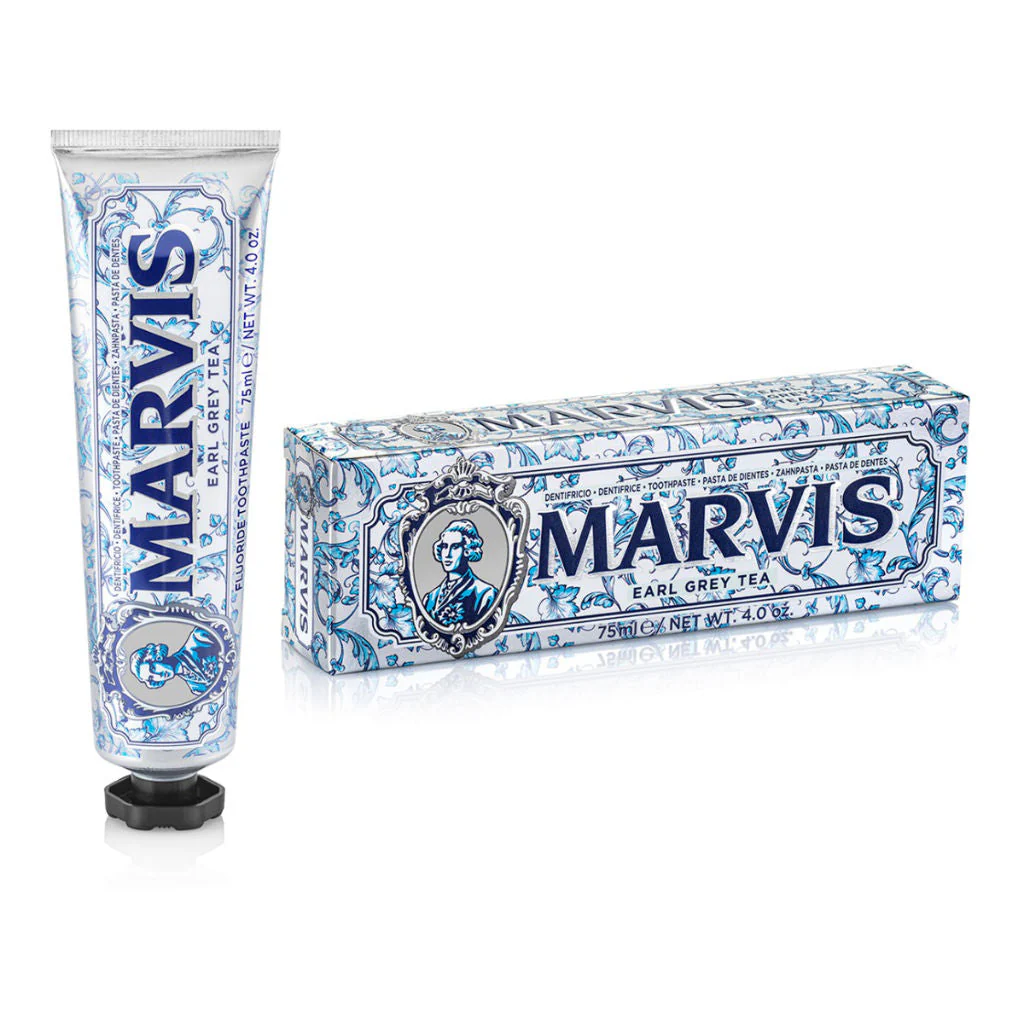
Regulatory Stance on Titanium Dioxide
European Union?s Position and Bans
In response to these health concerns, the European Union took a firm stance against the use of titanium dioxide in food products. France led the way with a national ban, and the EU has since followed, enacting a widespread prohibition on the use of titanium dioxide as a food additive.
The FDA?s Assessment and Current Status
The FDA, however, maintains a different position. It has reviewed the EFSA’s findings but has not deemed it necessary to change its current regulations. Titanium dioxide continues to be permitted as a color additive in products sold within the United States, as long as it is used within the established guidelines.
Alternatives to Titanium Dioxide in Toothpaste
Natural and Conventional Brands Without Titanium Dioxide
With growing consumer concern, some toothpaste brands have chosen to eliminate titanium dioxide from their ingredients. Both natural and conventional brands offer titanium-free options, catering to the demand for ‘cleaner’ dental care products.
Benefits of Titanium-Free Dental Products
Toothpastes without titanium dioxide sidestep the current health debates and offer a more natural approach to dental hygiene. These products often employ alternative ingredients to achieve similar effects, like whiteness and opacity, without the associated concerns.

The Future of Titanium Dioxide in Consumer Products
Ongoing Research and Potential Changes in Regulations
Ongoing research will likely shape the future regulatory landscape for titanium dioxide. As new data emerges, we may see further restrictions or a broader acceptance of this ingredient’s safety in toothpaste and other consumer products.
The Debate Over Titanium Dioxide Safety
The safety of titanium dioxide in toothpaste is now in question. Studies have raised concerns about its potential to harm cells. Experts worry about its ability to accumulate in the body over time. This buildup could have serious health effects. The risk of cancer is one of the main fears. Yet, evidence on these risks is still not clear-cut.
Historical Safety Assessments and the EFSA’s Findings
Safety assessments have previously cleared titanium dioxide for use. Yet, recent EFSA research in 2021 has brought new concerns. The EFSA study points out genotoxic risks. This means titanium dioxide could damage DNA in cells. The research has led to strict reviews by regulators.
Potential Health Concerns Linked to Titanium Dioxide
Health worries center on cell damage and long-term effects. Some fear nanoparticles of titanium dioxide might stay in the body and lead to harm. These risks, including cancer, come from its potential genotoxicity. The full impact is still unknown. More data is needed to confirm these concerns.
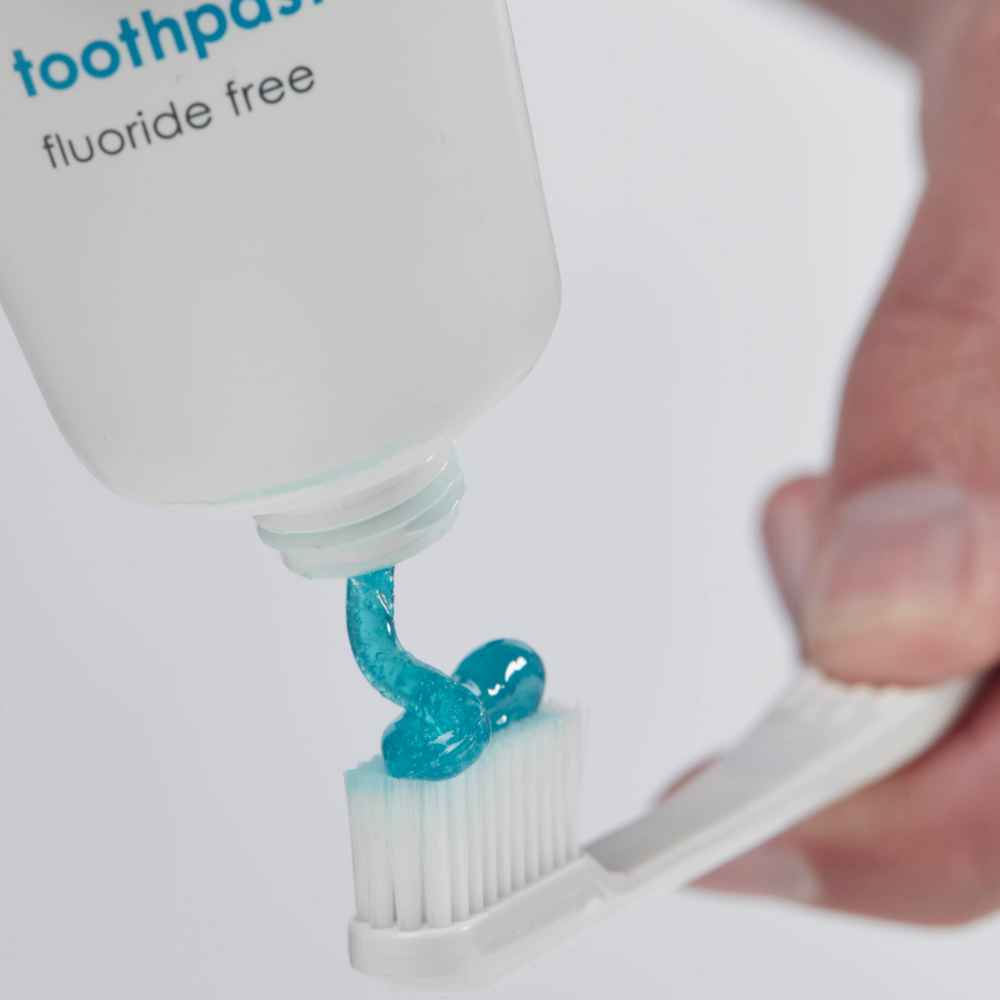
Regulatory Stance on Titanium Dioxide
European Union’s Position and Bans
The European Union has been proactive in addressing concerns about titanium dioxide. Citing health worries, especially the potential for cell damage, the EU has prohibited its use as a food additive. France was the first to impose a national ban, with the EU-wide restriction following suit. This move reflects a cautious approach, prioritizing consumer safety in light of uncertain risks.
The FDA’s Assessment and Current Status
In contrast, the United States’ Food and Drug Administration (FDA) has a different view. After examining the EFSA’s research, the FDA has not changed its stance. It still permits titanium dioxide in toothpaste and other products, within set guidelines. The FDA believes the substance is safe for use, as per existing studies. However, it is important to note that regulations can evolve. The FDA may adjust its position if new evidence on the risks of titanium dioxide arises.
Alternatives to Titanium Dioxide in Toothpaste
Concern over the safety of titanium dioxide has prompted consumers to seek alternatives. Brands now offer toothpaste options free of this mineral. These choices aim to provide peace of mind alongside oral health benefits.
Natural and Conventional Brands Without Titanium Dioxide
A growing number of toothpaste makers exclude titanium dioxide. They focus on natural or other non-toxic substances for whiteness and opacity. Consumers can find such products by reading labels carefully. Natural brands, in particular, highlight their titanium-free formulas as a selling point.
Benefits of Titanium-Free Dental Products
Toothpastes lacking titanium dioxide often use gentler ingredients. These might include baking soda, hydrated silica, or calcium carbonate. Such alternatives can still ensure a bright smile without the debated risks. Users of titanium-free toothpaste also support more natural product standards.
The Future of Titanium Dioxide in Consumer Products
The future of titanium dioxide in toothpaste and other products is uncertain. Here we explore what might lie ahead for this controversial ingredient.
Ongoing Research and Potential Changes in Regulations
Ongoing studies on titanium dioxide will shape its regulatory changes. Scientists are looking into its health effects. This means regulations may tighten or ease based on new findings. The EU has set a precedent with its ban. Other regions, including the US, may re-evaluate their stance if fresh evidence points to significant risks. Companies might also take preemptive action, replacing titanium dioxide with safer alternatives. Consumers are becoming more aware and might push for changes.
Research is key to understanding and managing the risks of titanium dioxide. The ingredient’s future hinges on clear scientific evidence. This will ensure consumer safety and proper usage in products. The industry is also contributing to research efforts. Their aim is to innovate and find safer alternatives. Transparency about ingredients is crucial for consumer trust.
The use of titanium dioxide in healthcare products like toothpaste will likely continue to evoke mixed reactions. However, ongoing research will provide clearer answers. It will help authorities decide on regulations. It will also guide producers in creating safer and more acceptable products for everyday use. Consumers play a role too. They can choose products and brands that align with their safety preferences. Together, these elements will steer the future path for titanium dioxide’s role in consumer products.
